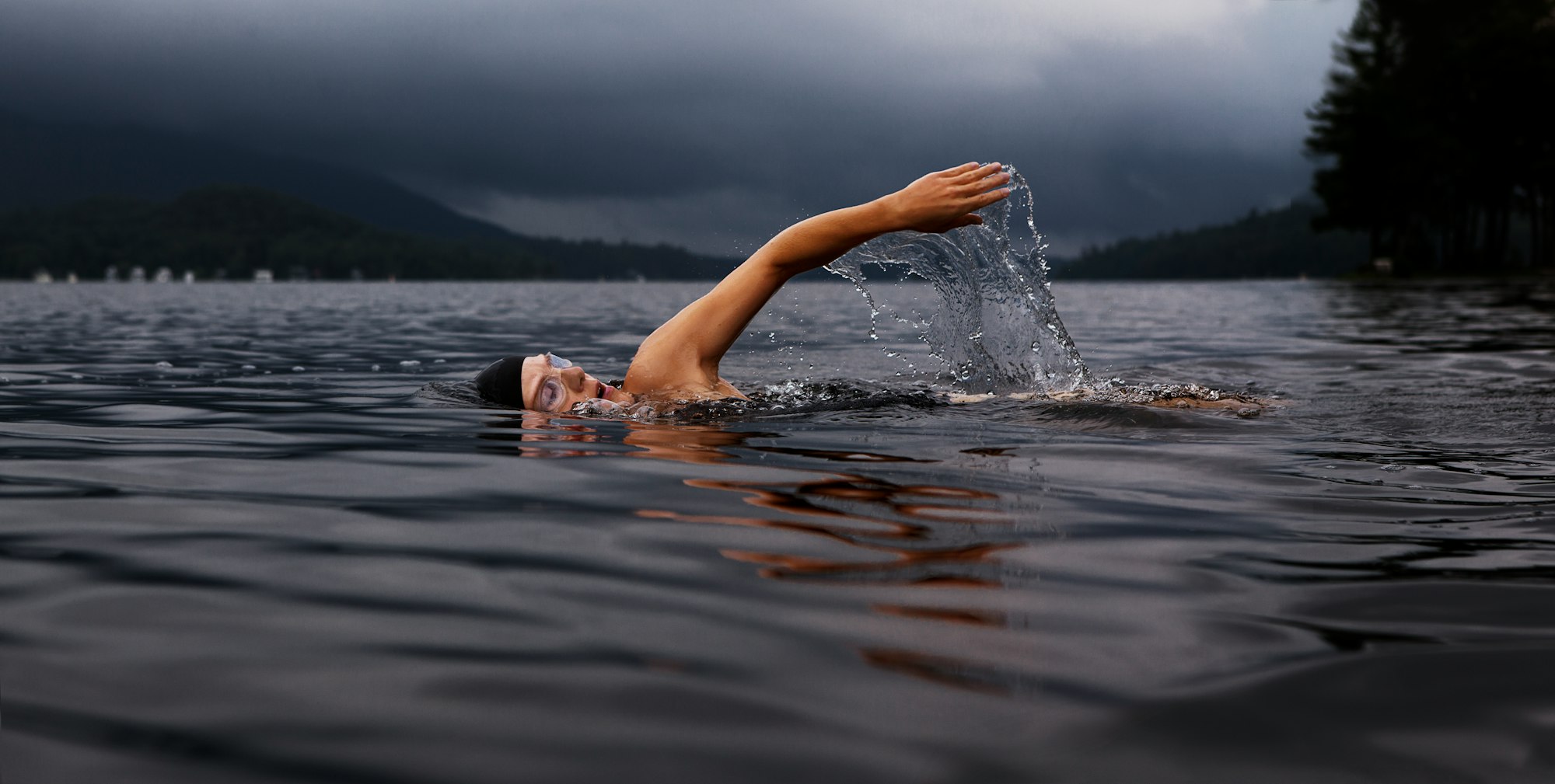Life isn't easy. You're dropped in a body of water at birth with no instruction manual. Some people have the privilege of extensive training and signposts, but many of us have no idea where to go or how to get there. Nobody will teach you how to swim, and you may not even know what destinations are possible to reach. But by keeping calm and being brave enough to swim steadily, we can reach as far as our body will carry us.
We're not all born with the exact same skillset. It's important to understand what tools you have, but simultaneously, not limit yourself in advance. With practice, swimming gets easier. With training, your lung capacity grows. Our limbs aren't all the same length and some will naturally swim faster than others, but don't let that impede you. All that matters is that you keep swimming.
The highest impact insight is understanding when you are thrashing and teaching yourself to swim.
The difference between thrashing and swimming
Thrashing is panic. When you thrash you are a danger to yourself and to others. You won't go anywhere and nobody can save you. You can generate a lot of noise and look like you're swimming but your sole focus is keeping your head above water.
Swimming takes mental clarity. Deciding to swim rather than thrash does not mean you are swimming in the right direction - or even that you have any idea which way you're heading. It also doesn't mean you're any good at swimming. The key is the mental decision to not focus internally rather than on the difficulty around you, the struggle to breathe and simply survive. It's the brave, risk-taking mindset that even with a sub-par technique you will fix your eyes on a target and start moving.
Look around you to learn how to swim better. Improve your form by watching high performers and mirroring their technique. Remember that swimming takes different forms. You may be surrounded by people doing an amazing breaststroke, but that technique doesn't resonate with you. Backstroke instead. And if you can't backstroke, do the frog.
Continually adapt. Get data points on your bearings, keep your eyes and ears open to ensure you avoid obstacles. The easiest way to avoid obstacles is to watch those ahead of you. Avoid the mistakes they make and mirror the things they get right.
You may not be heading in the right direction when you start but by listening, watching and gathering data you can right your bearings and reach where you want to go.
When you're swimming you can manage your cadence. Don't waste energy. Measure your breathing and maintain your stamina for the long haul. Take care not to burn out. When you're thrashing you have zero control over your breathing or your stamina. Thrashing wildly is the fastest way to deplete your energy, and lose hope. That's when the water starts to drag you under.
Further Reading :










